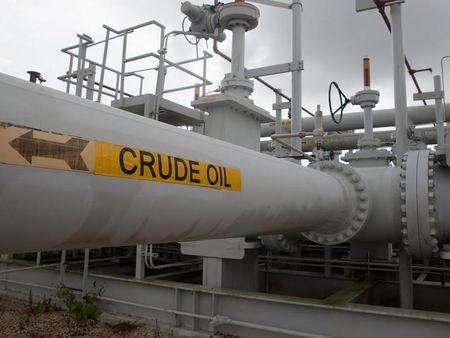Commodities
Oil prices rise on OPEC+ output rise delay report

Investing.com – U.S. oil futures rose Wednesday on hopes that a group of major producers will continue limiting supply, in order to support the market weighed by demand growth concerns.
At 07:55 EST (11:55 GMT), crude oil futures traded 1% higher at $71.02 a barrel and climbed 0.6% at $74.19 a barrel.
OPEC+ may delay planned output hike
The Organization of Petroleum Exporting Countries and allies, a group known as OPEC+, is discussing a delay in a planned output increase next month, Reuters reported earlier Wednesday, citing sources from the producer group.
Eight OPEC+ members are scheduled to raise output by 180,000 barrels per day (bpd) in October as part of a plan to begin unwinding their most recent layer of output cuts of 2.2 million bpd.
Market volatility from oil facility shutdowns in Libya and a weak demand outlook have raised concerns within the group, according to the report, with one source saying a delay was looking “highly possible” at this stage.
Potential end to a dispute in Libya
Both benchmarks slumped more than 4% during the previous session, falling to their lowest levels since mid-December, following news over a potential resolution of a dispute in Libya that has caused a halt in the country’s crude production and exports.
Libya’s legislative bodies have reportedly agreed to name a new central bank governor within 30 days, following United Nations-sponsored discussions.
The announcement on Tuesday raised hopes for an end to the political deadlock that has severely disrupted Libya’s oil exports.
On Monday, major Libyan ports ceased oil exports, and production was cut throughout the nation due to a standoff between rival factions vying for control of the central bank and access to oil revenues.
The impact of the dispute on Libya’s oil output has been stark. The National Oil Corporation (NOC) reported that total production had dramatically fallen to just over 591,000 bpd on August 28, down from nearly 959,000 bpd two days earlier, according to Reuters.
This marked a significant drop from approximately 1.28 million on July 20, indicating the severity of the production cuts.
Demand growth worries weigh
Also hitting sentiment Tuesday was a weak U.S. manufacturing activity data release, raising fears that the world’s largest economy was heading for a hard landing, and a possible recession.
Concerns about economic slowdowns in China, Europe and the U.S. have weighed on the crude market for some time, with some traders worried that central banks, and the Federal Reserve in particular, have held interest rates at elevated levels for too long as they attempt to conquer inflation.
Weekly U.S. inventory data has been delayed by Monday’s Labor Day holiday. The report from the American Petroleum Institute is due later in the session, while data from the Energy Information Administration will be published on Thursday.
Commodities
Oil prices rise; U.S. crude inventories plunge, Russia-Ukraine truce eyed
Commodities
India’s Reliance to stop buying Venezuelan oil over US tariffs, sources say
Commodities
Oil prices climb on Venezuela supply worries

 Forex3 years ago
Forex3 years agoForex Today: the dollar is gaining strength amid gloomy sentiment at the start of the Fed’s week

 Forex3 years ago
Forex3 years agoUnbiased review of Pocket Option broker

 Forex3 years ago
Forex3 years agoDollar to pound sterling exchange rate today: Pound plummeted to its lowest since 1985

 Forex3 years ago
Forex3 years agoHow is the Australian dollar doing today?

 Cryptocurrency3 years ago
Cryptocurrency3 years agoWhat happened in the crypto market – current events today

 World3 years ago
World3 years agoWhy are modern video games an art form?

 Commodities3 years ago
Commodities3 years agoCopper continues to fall in price on expectations of lower demand in China

 Economy3 years ago
Economy3 years agoCrude oil tankers double in price due to EU anti-Russian sanctions



























